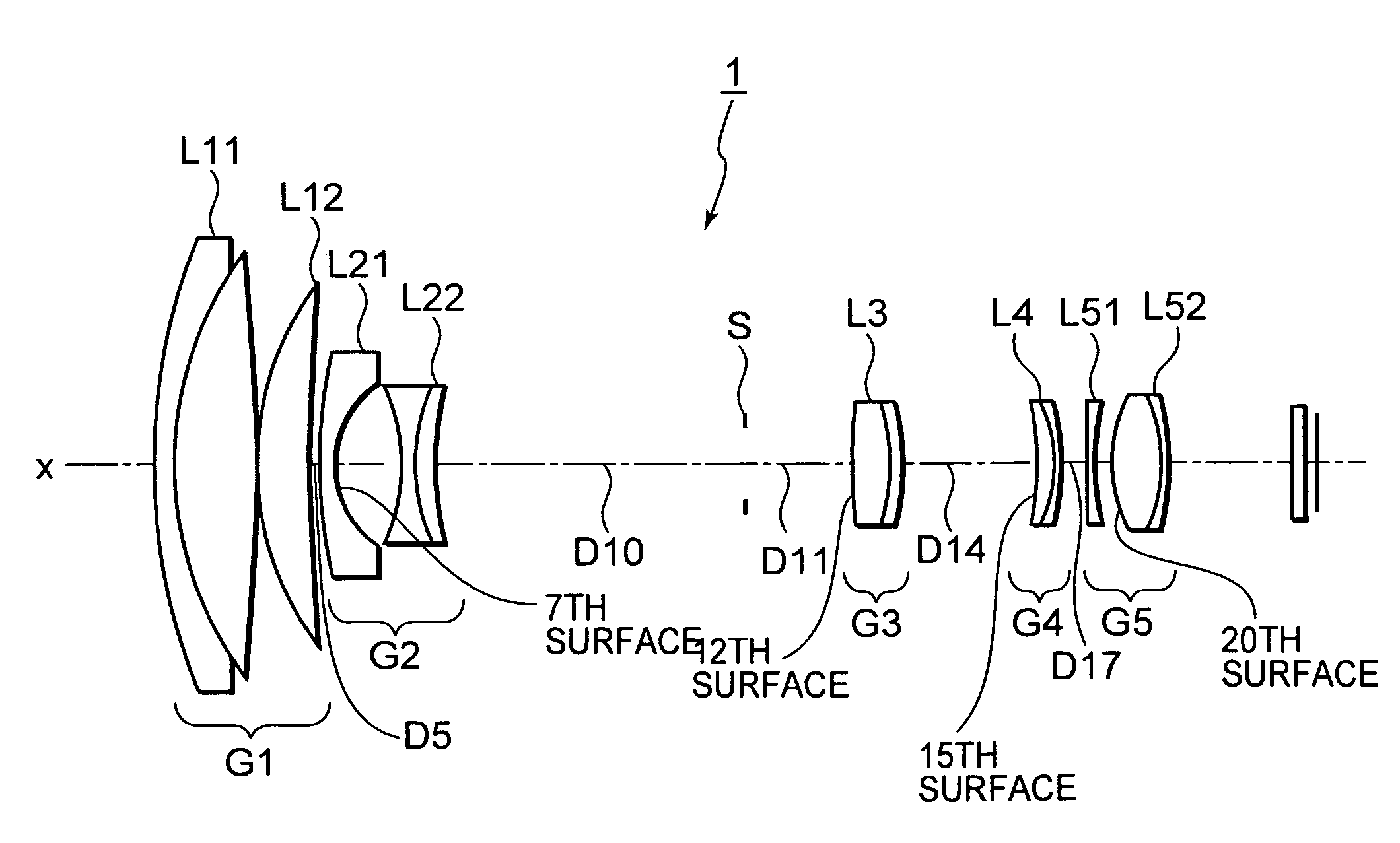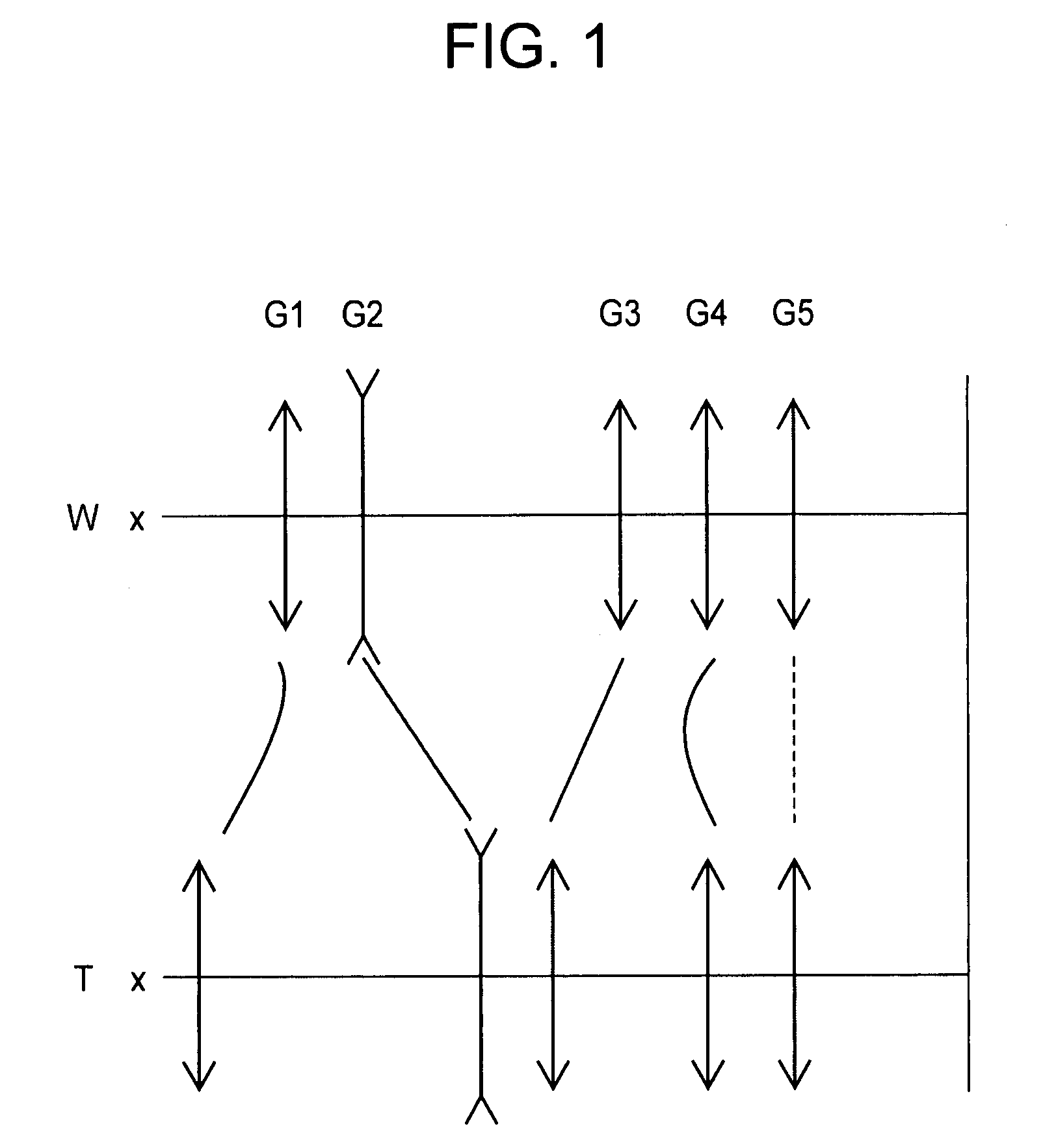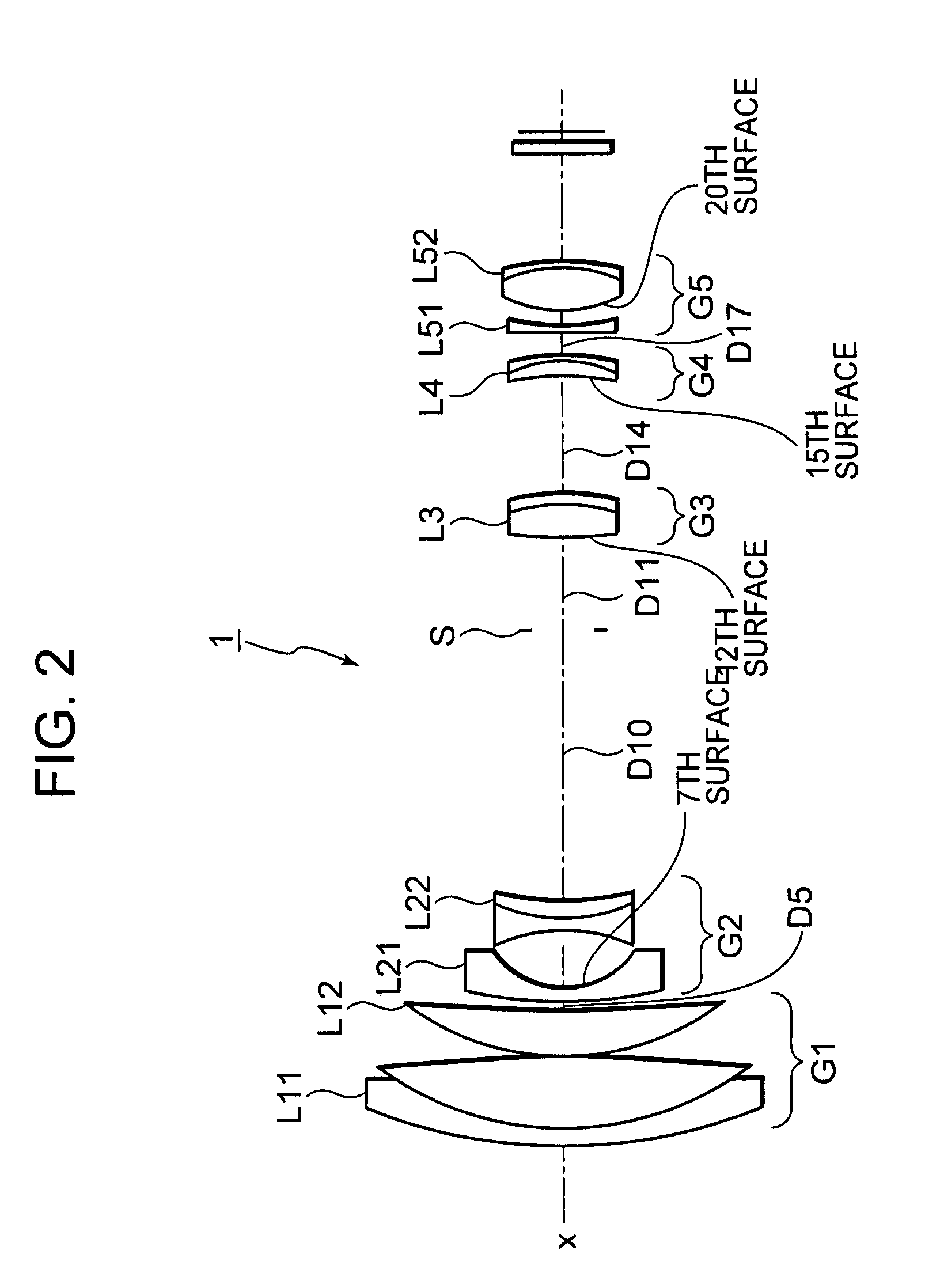Variable focal length lens system and imaging apparatus
a variable focal length and lens technology, applied in the field of new variable focal length lens system and imaging apparatus, can solve the problems of weakening refractive power, easy compromise of performance, and compromising performance, and achieve the effect of high zoom ratio and miniaturization
- Summary
- Abstract
- Description
- Claims
- Application Information
AI Technical Summary
Benefits of technology
Problems solved by technology
Method used
Image
Examples
embodiment 1
[0138]The seventh, twelfth, fifteenth and twentieth surfaces are aspherical. As such, the fourth- (A), sixth- (B), eighth- (C) and tenth-order (D) aspheric coefficients of these surfaces in numerical embodiment 1 are shown in table 2 along with their conic constants (κ). It is noted that in table 2 and the subsequent tables showing the aspherical coefficients, “E−i” is an exponential notation to base 10, in other words, “E-i” represents “10−i”, and, “0.12345E-05” represents, for example, “0.12345×10−5”.
[0139]
TABLE 2 7thκ = 0.000000A = −0.135737E-02B = −0.521916E-03C = −0.347911E-02D = +0.413344E-02Surface12thκ = 0.000000A = −0.673780E-02B = +0.479402E-02C = +0.796889E-02D = +0.458605E-02Surface15thκ = 0.000000A = −0.627487E-02B = −0.353678E-02C = +0.663879E-02D = −0.423531E-02Surface20thκ = 0.000000A = −0.117751E-01B = +0.335768E-02C = −0.409342E-02D = +0.140861E-02Surface
[0140]As the lens position state changes from the wide-angle end state to the telephoto end state, surface gap D...
embodiment 2
[0150]The seventh, twelfth, fifteenth and twentieth surfaces are all aspherical. As such, the fourth- (A), sixth- (B), eighth- (C) and tenth-order (D) aspheric coefficients of these surfaces in numerical embodiment 2 are shown in table 6 along with their conic constants (κ).
[0151]
TABLE 6 7thκ = 0.000000A = −0.195289E-02B = +0.996592E-03C = −0.452079E-02D = +0.348160E-02Surface12thκ = 0.000000A = −0.691555E-02B = +0.384528E-02C = −0.598708E-02D = +0.329867E-02Surface15thκ = 0.000000A = −0.679746E-02B = −0.111337E-02C = +0.190339E-02D = −0.118063E-02Surface20thκ = 0.000000A = −0.111597E-01B = +0.318369E-02C = −0.371284E-02D = +0.116364E-02Surface
[0152]As the lens position state changes from the wide-angle end state to the telephoto end state, surface gap D5 between the first lens group G1 and the second lens group G2, surface gap D10 between the second lens group G2 and the aperture stop S, surface gap D11 between the aperture stop S and the third lens group G3, surface gap D14 betwee...
embodiment 3
[0162]The eighth, thirteenth, sixteenth and twenty-first surfaces are all aspherical. As such, the fourth- (A), sixth- (B), eighth- (C) and tenth-order (D) aspheric coefficients of these surfaces in numerical embodiment 3 are shown in table 10 along with their conic constants (κ).
[0163]
TABLE 10 8thκ = 0.000000A = −0.434984E-03B = +0.572353E-02C = −0.126050E-01D = +0.978155E-02Surface19thκ = 0.000000A = −0.689014E-02B = +0.425011E-02C = −0.697951E-02D = +0.398211E-02Surface16thκ = 0.000000A = −0.755406E-02B = −0.208868E-02C = +0.370596E-02D = −0.231137E-02Surface21stκ = 0.000000A = −0.115363E-01B = +0.325661E-02C = −0.395446E-02D = +0.128002E-02Surface
[0164]As the lens position state changes from the wide-angle end state to the telephoto end state, surface gap D5 between the first lens group G1 and the second lens group G2, surface gap D11 between the second lens group G2 and the aperture stop S, surface gap D12 between the aperture stop S and the third lens group G3, surface gap D15...
PUM
 Login to View More
Login to View More Abstract
Description
Claims
Application Information
 Login to View More
Login to View More - R&D
- Intellectual Property
- Life Sciences
- Materials
- Tech Scout
- Unparalleled Data Quality
- Higher Quality Content
- 60% Fewer Hallucinations
Browse by: Latest US Patents, China's latest patents, Technical Efficacy Thesaurus, Application Domain, Technology Topic, Popular Technical Reports.
© 2025 PatSnap. All rights reserved.Legal|Privacy policy|Modern Slavery Act Transparency Statement|Sitemap|About US| Contact US: help@patsnap.com



